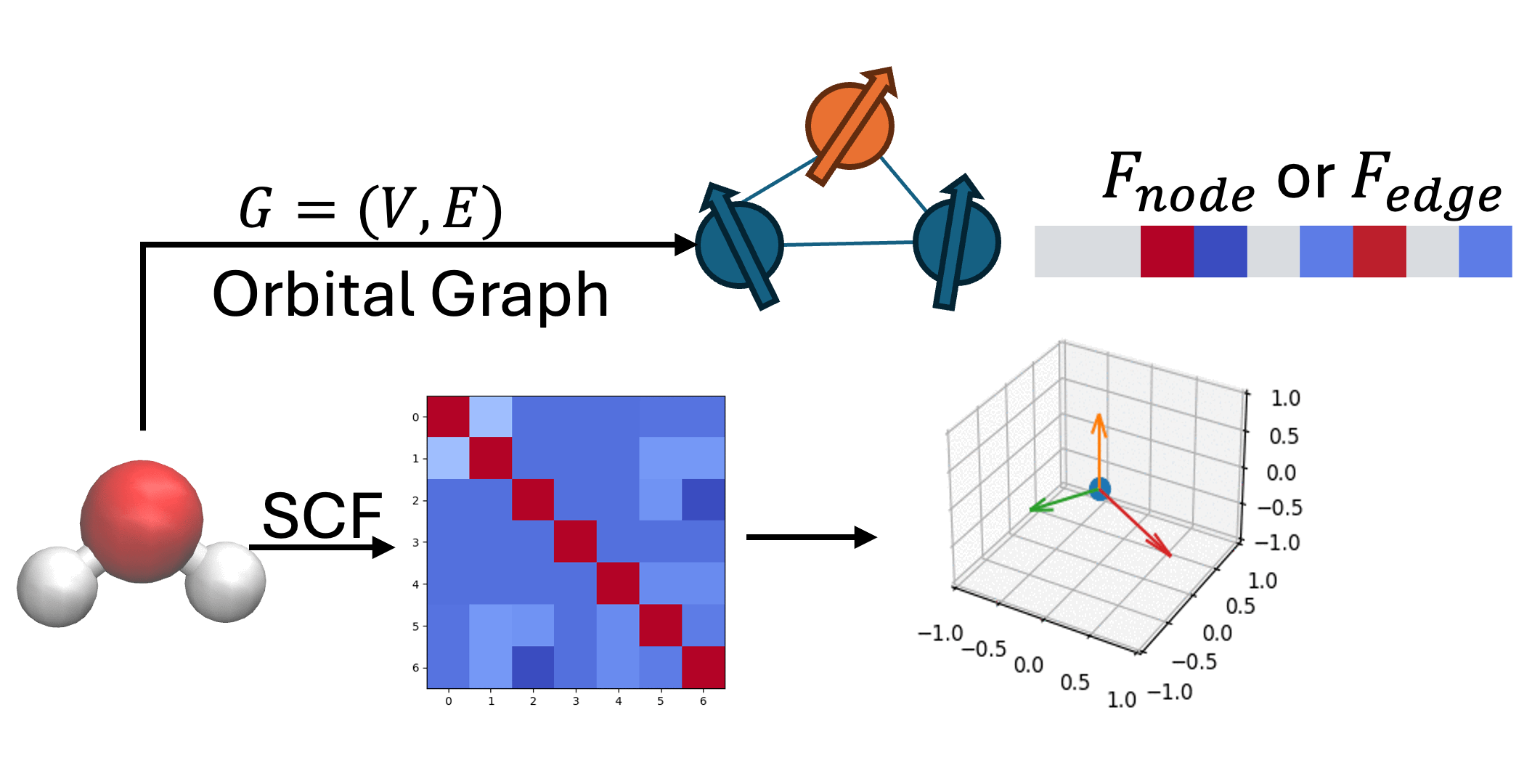
🔬 TransOrb: A Unified Orbital-Based Learning Framework
TransOrb is proposed to a next-generation framework that unifies molecular orbital (MO)- & atomic orbital (AO)-based learning to enable accurate, scalable, and transferable predictions of electronic structure properties across diverse chemical systems. Building on our earlier works—MOB-ML (targeting high-accuracy with small data) & OrbNet (targeting large-scale systems with DFT-level accuracy)—TransOrb integrates the strengths of both methods to span the entire landscape of quantum chemical modeling . Also, this framework leverages MO and/or AO features represented by information post-processed/transformed from energy matrices obtained from various SCF procedure with different costs. E.g., more expensive SCF procedure (e.g., Hartree–Fock) and/or efficient semi-empirical methods (e.g., GFN2-xTB). This general representation and framework can bridge different levels of theory and different sizes of data availability via various learning protocols & downstream tasks at both ground & excited states.
Some possible learning modes including:
- 🧬 General representation of chemical systems via contrastive representation learning
- 📈 Efficient & uncertainty-aware wavefunction-related property prediction by supervised learning (regression), using deep kernel learning from limited Simulator data
- 🗺️ Unsupervised learning for chemical space exploration
- 🔧 MO/AO fitting room: Generative modeling to design systems with target properties by combining useful orbitals
- 🧠 Transfer learning across chemical datasets
✨ And more...
🎯 Some possible downstream tasks include:
- 🔬 Accurate prediction of molecular & material energies and properties
- 🗂️ Molecular screening and virtual high-throughput experiments
- 🧩 Reaction pathway modeling and transition state prediction
- 🧪 Generation of potential energy surfaces (PESs) for dynamics simulations (See Predictor )
- 🧬 Support for drug discovery and material design
✨ And more...